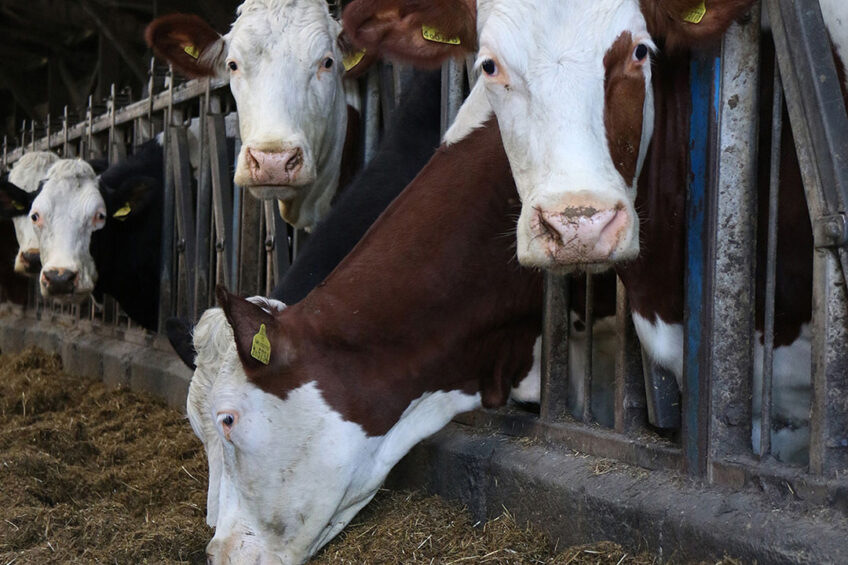Calcium salt fat supplements for cows – why size matters

Fine versus large granules – what is better when it comes to calcium salt fat supplements? Research indicates that granule size has a major impact on the degree of rumen-protection of fat supplements.
Research by Volac Wilmar Feed Ingredients at the National University of Singapore reports significantly higher breakdown of calcium salts of fine granules (<0.5 mm diameter) compared to that of large granules (3-4 mm diameter) across a range of different acid conditions to reflect typical rumen ph values, according to a news release.

Because calcium salts are an industry-standard method of delivering C18:1 (oleic) and C16:0 (palmitic) fatty acids to dairy cows, the implications of these findings are clear – the physical nature of calcium salt supplements is a key factor in the success of delivery of fatty acids through the rumen in their active form – the bigger, the better.
“Rumen-protection is critical to avoid reductions in rumen fibre digestibility and to ensure delivery of unsaturated fatty acids, such as C18:1, through the rumen to the small intestine for absorption,” says Dr Richard Kirkland, global technical manager for Volac Wilmar Feed Ingredients. “In simple terms, we manufacture rumen-protected fats for two reasons. The first is to protect the rumen from the fat, which allows us to avoid reductions in fibre digestibility. The second is to protect the fat from the rumen to avoid biohydrogenation of unsaturated fatty acids to ensure they pass to the small intestine for functional benefit.”
In order to optimise cow performance and return on investment through fat supplementation, product granule size needs to be considered.
Beneficial during lactation
Ongoing research has highlighted the effects of individual fatty acids on milk yield, milk fat content, body condition score and fertility at different periods of lactation, says Professor John Newbold, PhD, Professor of Dairy Nutrition at Scotland’s Rural College.

“In isolation, C16:0 improves milk fat production and yield, and is most beneficial in mid to late lactation. C16:0 induces insulin resistance to increase the partitioning of nutrients to milk, though appears to have negative effects on egg development leading to reduced fertility,” explains Professor Newbold.
“By contrast, C18:1 improves digestibility of total fat leading to increased energy supply and is linked to enhanced body condition score. C18:1 also promotes egg development, boosting fertility by improving embryo development. To capture the full benefits of C18:1, supplements with higher proportions should be offered in early lactation.”
To maximise returns from specific milk contracts, fatty acids should be selected depending on the stage of lactation, individual farm challenges and contract requirements. For year-round calving herds, targeting specific fatty acid requirements for individual cows is not a feasible task. However, selecting a multipurpose fat supplement balanced with an optimum C16:0 to C18:1 ratio is an effective way to overcome this challenge.

“In the correct ratio, C16:0 and C18:1 fatty acids can help balance milk production, body condition and fertility during early lactation. As the cow transitions into later stages of lactation, C16:0 can effectively increase milk fat production,” says Professor Newbold.
Dr Kirkland further added, “Particle size varies greatly according to the manufacturing process and different brands display a large range in granule size. The Megalac calcium salt brand, manufactured to have a higher proportion of large granules, is an effective way to optimise cow performance by improving fatty acid supply.”
Return on investment
According to Dr Kirkland, granule size of calcium salt fat supplements is a key factor when seeing a return on investment through targeted fat supplementation to ensure we maximise the delivery of active fatty acids through the rumen for absorption and utilisation.
“Rumen-protected fat supplementation not only helps meet energy requirements, but also supports specific areas of performance. However, not all fatty acids will support cow performance in the same manner and not all fat supplements will be digested to the same extent due to differences in fatty acid profile. Particle size definitely matters and when it comes to calcium salts, the bigger, the better,” concludes Dr Kirkland.
Source: Volac Wilmar Feed Ingredients
Join 13,000+ subscribers
Subscribe to our newsletter to stay updated about all the need-to-know content in the dairy sector, two times a week.










